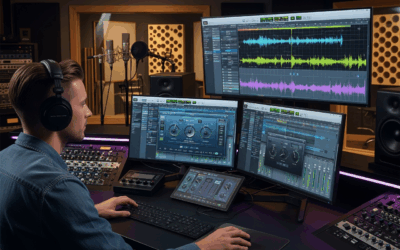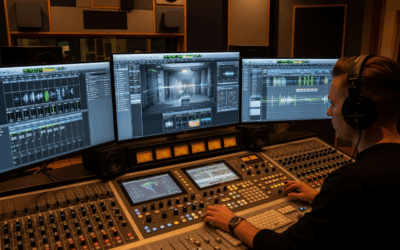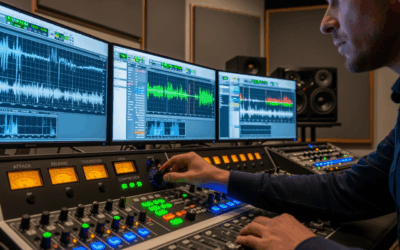The Problem: You spend hours perfecting your audio mix, only to discover during final review that levels are inconsistent, there’s unwanted noise, or the audio doesn’t translate well across different playback systems, forcing you to start the mastering process over.
The Solution: A systematic 5-minute checklist performed before final mastering catches 90% of common issues early, saving hours of rework and ensuring professional results every time.
Why Most Audio Projects Fail at the Finish Line
The mastering stage is where good audio becomes great—or where hours of work get derailed by overlooked details. Most audio producers rush through final checks, eager to deliver their project, only to discover critical issues that require starting over.
Professional mastering isn’t just about making audio louder. It’s about ensuring your audio works perfectly across all intended playback systems while maintaining the emotional impact and clarity you’ve crafted.
The 5-Minute Pre-Mastering Checklist
Minute 1: Technical Standards Verification
Check your levels: Ensure your mix peaks are hitting –6dB to –3dB, leaving headroom for mastering processing. Verify that no individual elements are clipping or distorting.
Verify sample rate and bit depth: Confirm your project matches your delivery requirements (44.1kHz/16-bit for CD, 48kHz/24-bit for video, etc.). Mismatched settings cause quality degradation that can’t be fixed later.
Minute 2: Frequency Balance Assessment
Listen on reference monitors: Check your mix on your most accurate playback system first. Listen for frequency imbalances—muddy low end, harsh midrange, or brittle highs that will be amplified during mastering.
Quick EQ check: Use a spectrum analyzer to identify any obvious frequency buildups or gaps. Your mix should have relatively even energy distribution across the frequency spectrum.
Minute 3: Dynamic Range Evaluation
Check for over-compression: Ensure your mix still has natural dynamics. Over-compressed mixes can’t be fixed in mastering—they’ll only sound more squashed.
Verify transient clarity: Make sure drum hits, vocal consonants, and other transient sounds cut through clearly without being overly aggressive.
Minute 4: Stereo Field and Phase Analysis
Mono compatibility test: Sum your mix to mono and listen for any elements that disappear or become thin. Phase issues that sound fine in stereo can destroy your mix on mono playback systems.
Stereo width assessment: Ensure your mix has appropriate width without being unnaturally wide. Elements should have clear placement in the stereo field.
Minute 5: Context and Reference Comparison
A/B against reference tracks: Compare your mix against professionally mastered tracks in the same genre. Match the general tonal balance and dynamic feel, not the loudness.
Platform-specific considerations: Consider where your audio will be heard. Podcast audio needs different treatment than music streaming or broadcast delivery.
The Professional Mastering Approach
Once your mix passes the 5-minute checklist, professional mastering follows a systematic approach:
Corrective EQ: Address any frequency imbalances identified in your checklist
Compression: Add subtle glue compression to enhance cohesion
Harmonic enhancement: Add subtle saturation or harmonic excitement for polish
Limiting: Achieve target loudness while preserving dynamics
Final verification: Check against technical standards and reference tracks
Common Mastering Mistakes to Avoid
Over-limiting: Pushing loudness at the expense of dynamics creates listener fatigue
Excessive EQ: Dramatic frequency changes in mastering usually indicate mix problems
Ignoring genre conventions: Different musical styles have different mastering expectations
Skipping quality control: Not checking your master on multiple playback systems
Advanced Quality Control
Professional mastering includes checking your final master on:
– High-end studio monitors
– Consumer headphones
– Car speakers
– Phone speakers
– Laptop speakers
Each playback system reveals different aspects of your master’s translation quality.
Pro Tip: The most expensive mastering mistake is discovering problems after delivery. This 5-minute checklist catches issues when they’re still easy to fix, rather than after you’ve committed to a master that doesn’t work. Professional mastering engineers spend more time on quality control than on processing—the checklist ensures your audio is ready for the final polish that makes it truly professional.
Need professional mastering that gets it right the first time? Contact RHDR Media at (901) 485–9180 or visit rhdr.media for expert audio mastering services. Whether you need music mastering, podcast post-production, or broadcast-ready audio, let’s ensure your projects sound professional across all playback systems.





0 Comments